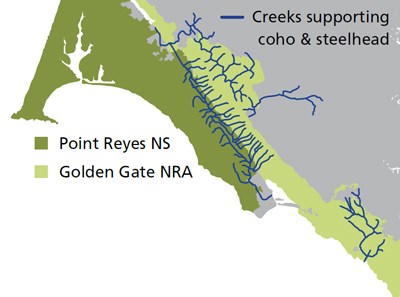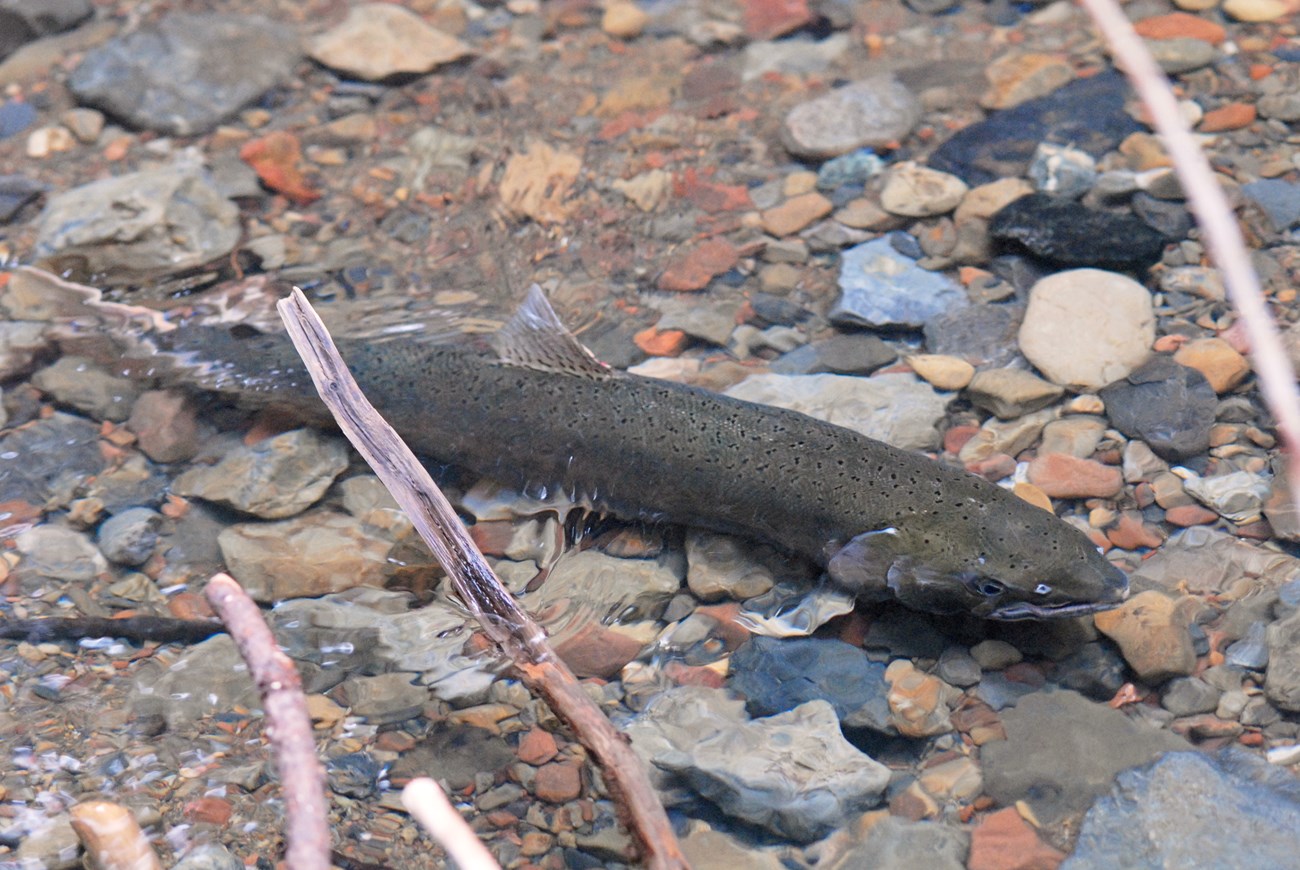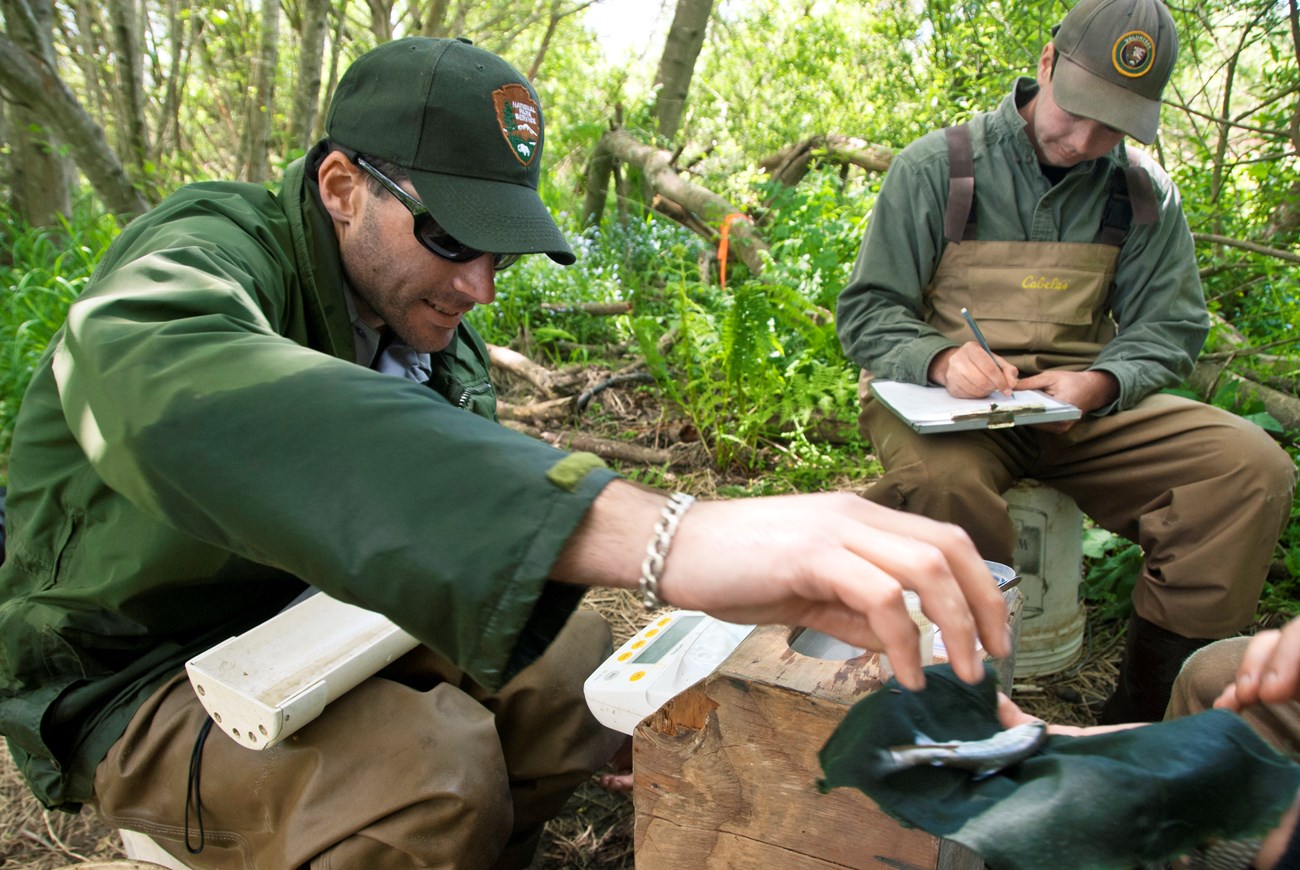Last updated: February 12, 2025
Article
San Francisco Bay Area Coho Salmon & Steelhead Trout Monitoring

NPS / Jessica Weinberg McClosky

Why Are Coho & Steelhead Important?
Federally endangered coho salmon and threatened steelhead trout are large, charismatic fish that play crucial roles in both stream and ocean ecosystems. They transport nutrients, help keep insect populations under control, and serve as food for larger fish and mammals. They also have many known habitat requirements (e.g. cool streams with unobstructed flow, good water quality, gravel beds and plenty of large debris) that impact their survival and make them strong indicators of stream health and environmental change. The National Park Service Inventory and Monitoring Program and its partners began monitoring coho and steelhead in Golden Gate National Recreation Area, Muir Woods, and Point Reyes National Seashore in 1998.

NPS / Jessica Weinberg McClosky
Why Do We Monitor Coho & Steelhead?
- To detect trends in the distribution and abundance of coho and steelhead at key life stages in creeks known to have coho, the species of primary concern
- To determine trends in fish fitness (e.g. length, weight) at key life stages
- To identify changes in coho and steelhead habitat
How Do We Use the Monitoring Data?
- To identify impaired park habitats that hinder coho and steelhead recovery
- To guide and evaluate stream habitat restoration and protection efforts
- To predict and prepare for the effects of climate change, such as changing rainfall patterns, on stream habitats and associated fish populations

NPS / Jessica Weinberg McClosky
What Have We Learned?
Both coho and steelhead populations have declined dramatically as a result of habitat loss, overfishing and changing ocean conditions. Spawning Central California Coast coho populations are down to only about 1% of historic levels. Because the coho have a unique life cycle where adults are normally three years old when they spawn, adults in the creek one year aren’t descendants of adults that were in the creek the previous year, or the year before that. They are offspring of adults from three years prior. This means that there are three distinct coho “cohorts” monitored at each creek. Specific trends vary by cohort and by creek, but in general coho on the West Coast are still in need of recovery actions.
For More Information
Fishery Biologist
Michael Reichmuth
Pacific Coast Science and Learning Center
https://www.nps.gov/rlc/pacificcoast/coho-steelhead.htm
San Francisco Bay Area Network
https://www.nps.gov/im/sfan/salmonids.htm
Summary by Jessica Weinberg McClosky, July 2013.
Download PDF from the NPS DataStore or Descargar el PDF en español
